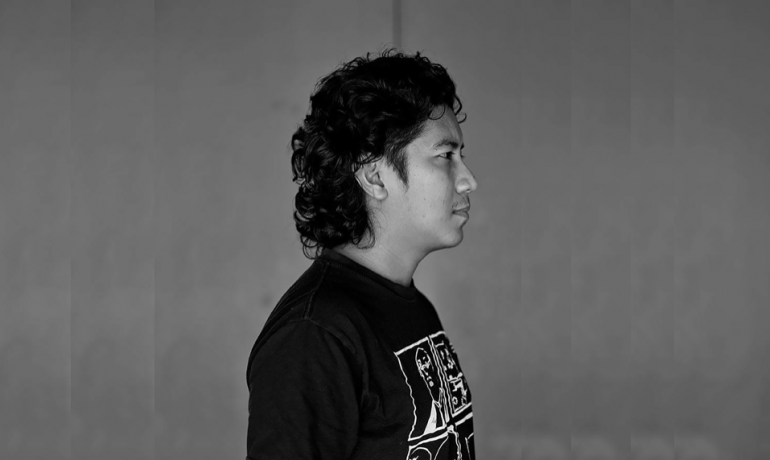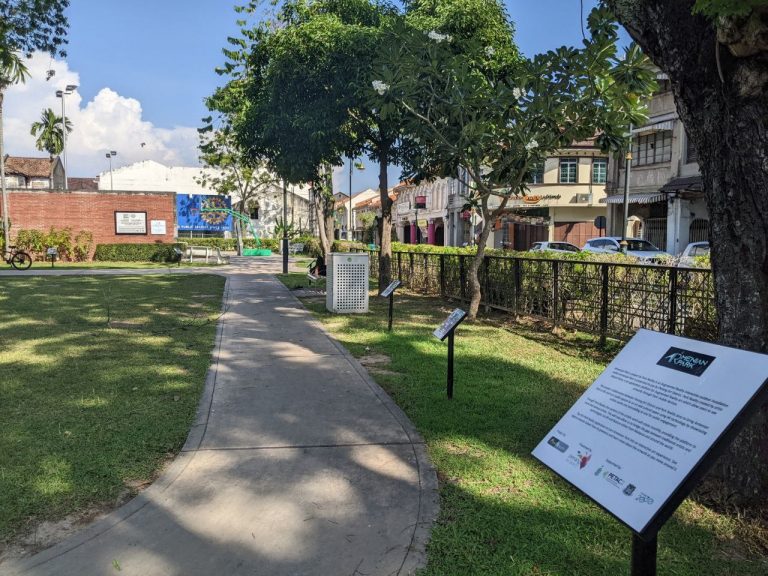Award-winning visual artist Ajim Juxta tells us why abstract and surrealist art is meant to raise questions and provoke thinking in viewers’ minds.
By Lim Wan Phing
When one thinks of abstract art, an image of convoluted emotions comes to mind. It could be trouble, sadness, joy, rage—but whatever it is, it sometimes can’t be pinned down into a concrete object with a name, like not finding a word to accurately describe a feeling or situation.
For Ajim Juxta, his Lamantara series of artwork is a display of grey lines, white space, and splotches of muted yellow, cut and smeared with a palette knife, all rising in shapeless forms to create mountain-like landscapes. With pieces titled Tugu Rangka (Skeletal Monument), Ruang Kelabu (Grey Space), Gelap Gelora (Dark Surge), and Bahtera (Ark), you get the drift.
His other series, Sanubari, lives in the brighter realm of red hues, but is no less intense. Art pieces like Misteri (Mystery) and Mimpi (Dreams) could be interpreted as happy autumn scenes, or also nightmarish dreams depending on who’s looking at it.
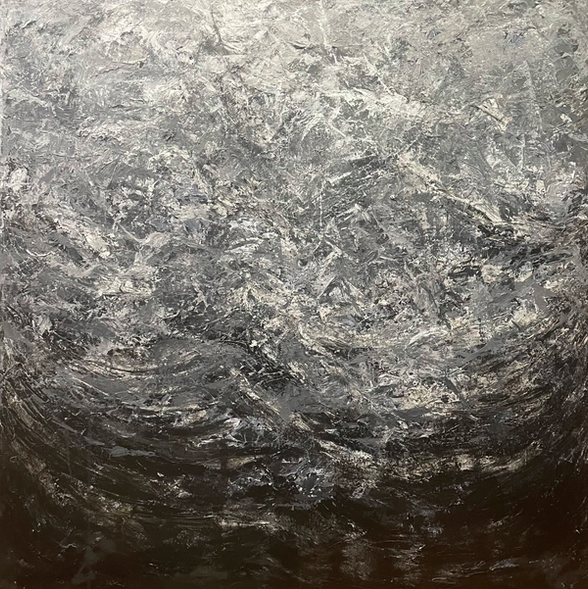
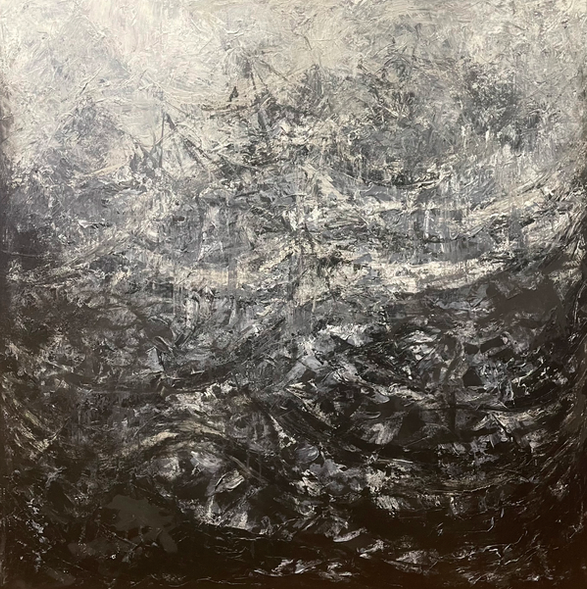
(L-R) Gelap Gelora and Bahtera from the Lamantara series.
But that’s exactly the point of abstract art. Speaking to Penang Art District via email, Kuala Lumpur-based Ajim explains that art is supposed to raise questions, not provide them. The role of an artist, he says, is to produce thought-provoking works. But it’s the audience’s prerogative to move out of their comfort zones, be open-minded, and explore genres they’re not usually exposed to.
When asked about how abstract art is not something everyone is able to “get” or appreciate, Ajim explains, “The audience should be playing a bigger role in learning to look at different things, and arming themselves with the knowledge of how to do that and how to get there.”
Technology and art coming together
Both the Lamantara and Sanubari series were displayed here in Penang last month, as part of Hin Bus Depot’s ‘Of Spaces in Between’ exhibition. Concurrently, they were also shown at ARmenian Park, an augmented reality (AR) exhibition in George Town’s Armenian Park, where users download an app called Perk Reality, scan a QR code, and view full-sized artworks digitally through one’s mobile phone.
With about 18 stands dotting the park, all of Ajim’s artworks could be seen this way without the physical pieces being exposed to rain or shine in this corner park along Lebuh Armenian and Lebuh Acheh—a perfect example of technology and art coming together to transcend physical space.
ARmenian Park is Malaysia’s first augmented reality park showcasing artwork by different artists every month. Photo credits: Lim Wan Phing.
The brainchild of Penang-based sculpture artist Aboud Fares, ARmenian Park was launched in January 2023 and is the first augmented reality park in Malaysia. Speaking of art being accessible, that’s exactly its purpose—to bring art to the people in a public place, with a different featured artist every month (May 2023’s artist is Dhavinder Singh, with his solo exhibition ‘Recollectus’).
Fares tells us that the feedback and response from the public have been positive so far, and that he hopes to exhibit group shows in order to accommodate more artists. For now, his selection criteria is that artists should reside outside Penang, whether Malaysians or foreigners. This is part of his plan to draw the crowds and make art more international-friendly.
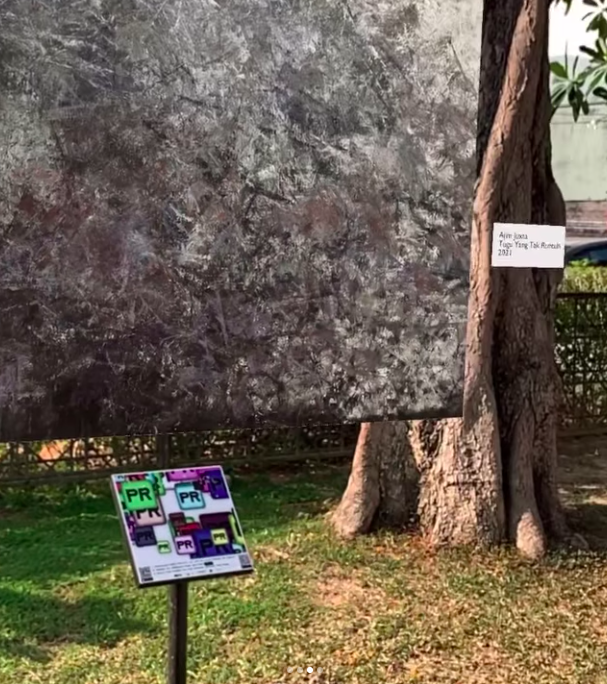
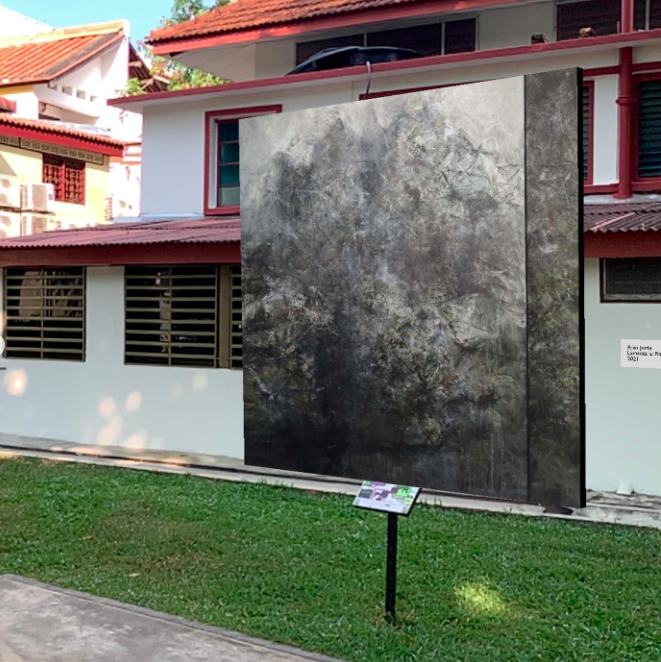
Ragamasa (Left) and Tugu yang tak runtuh (Right): two augmented reality artworks by Ajim Juxta on display at ARmenian Park in April.
That’s exactly how Ajim sees the art scene in Penang—unique, diverse and welcoming. “Art in Penang for me is about discoveries, whereas in KL it’s all about expectations. It’s definitely different here than in the big city,” says Ajim, who is an architecture graduate and whose first exhibition in Penang dates back to 2013 at the Platform in ChinaHouse.
But with a Malaysian Emerging Artist Award finalist award in 2011 to his name and 30 or more exhibitions already on his CV before ChinaHouse, Ajim has come a long way since his first artist show in 2009. His achievements include the Young Art Award Taipei 2016, Young Guns Award 2016, and being accepted into Khazanah Nasional’s artist residency at Acme Studios in London in 2017.
Making sense of the unknowable
Now an established abstractionist in the Malaysian arts scene, Ajim Juxta shows no signs of stalling. He continues to experiment with different mediums like sculpture, ink work, murals, installations, and even being a singer, prose writer, and lyricist for a rock band.
It’s through these multi-faceted, multi-medium and varied projects that he aims to make sense of the world, a world which he sees as having gone wrong, a world which speaks of our precarious times; volatile, uncertain, complex, ambiguous. Brittle, anxious, non-linear and incomprehensible.
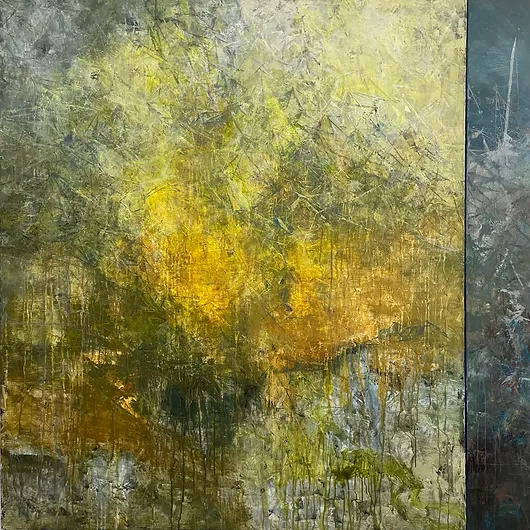
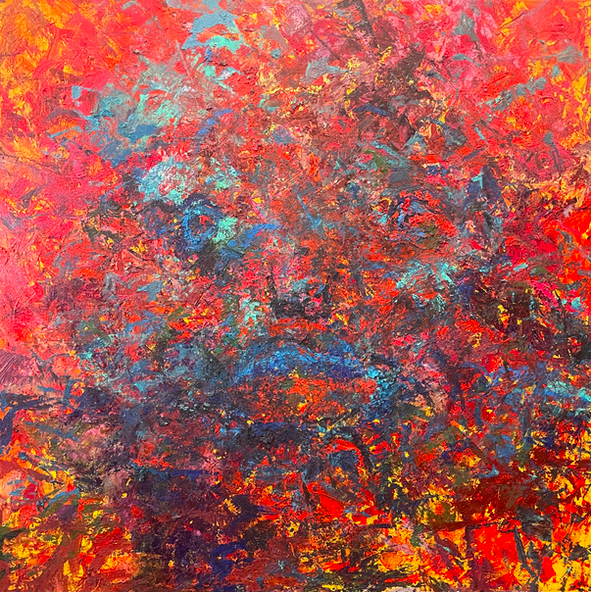
(L-R) Lamantara’s Peri dan Seru and Sanubari’s Misteri.
“Lamantara is a word I came up with for my solo exhibition in Subang last year,” he explains. “It is made up of the words Laman and Antara. It means the space or place in between.”
This feeling of being neither here nor there, of being in between places, define most of his artwork, even those before Lamantara and Sanubari (the latter means ‘soul’ in Malay). There are fragile structures more reminiscent of a graveyard of Skynet robots from Terminator 2, and distorted skeletal heads called Sisimuka (Profile) and Muka: Pecah (Face: Broken), each piece a message about the current state of our society and the world.
Why the fascination for dystopia? “Because I think we live in one already,” quips Ajim. “Other than that, I’m always intrigued by the idea of humans pursuing utopia while obtaining dystopia instead.” This worldview may seem grim, but with his speculative landscapes, shadowy figures, and moody yet intense colours, Ajim Juxta is paving the way for provoking viewers’ thoughts and challenging them to think in an open-ended way.
Much like life, there are some things we just can’t put our finger on, some things without form, not always tangible and concrete. And that is the power of abstract expressionist art—making sense of the unknowable and unpinnable.
Lamantara / Sanubari by Ajim Juxta is part of ‘Of Spaces in Between’ currently at ZHAN Art | Space in Petaling Jaya until 15 May 2023. For more artworks, visit ajimjuxta.com
All photos courtesy of Ajim Juxta unless otherwise noted.
Wan Phing is a Penang writer with a short story collection ‘Two Figures in a Car’ published by Penguin SEA.

